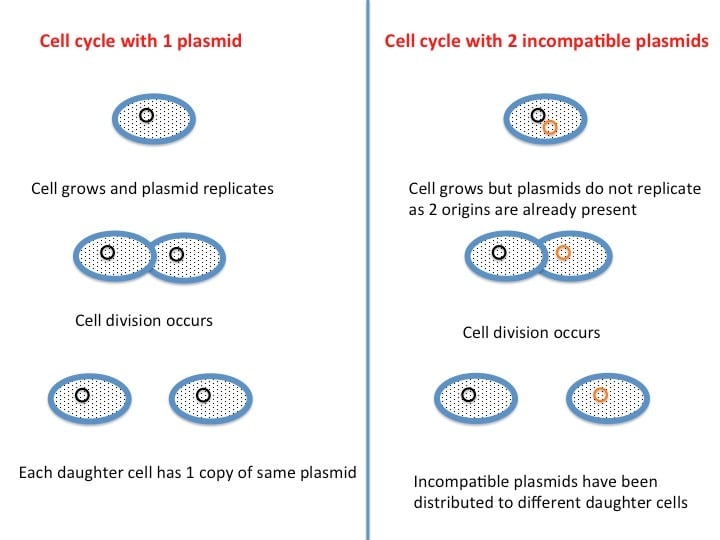miRNAs are highly conserved small non-coding RNAs that negatively regulate a range of processes in healthy and diseased states and are also valuable as biomarkers for a variety of conditions. This is why miRNA profiling is currently of immense biological interest and a rapidly growing field of study. But, before you can begin to decipher how your miRNA-of-interest regulates a biological response, you will need a sensitive, reproducible and widely-accepted miRNA profiling platform to measure expression. In this article, we’ll discuss what things you need to consider when choosing a platform for miRNA profiling and the different options available.
Considerations When Choosing an miRNA Profiling Platform
There is a wide variety of miRNA profiling platforms available out there and many factors to consider when designing your experiment, ranging from cost to accuracy. It can, therefore, be daunting to choose a profiling platform for your miRNA expression experiment. Here is a brief discussion on the things you need to consider when selecting a miRNA profiling platform:
- Goal: Is your goal to obtain an accurate overall picture of the miRNA repertoire, understand the process of miRNA maturation or delve into the biological significance of a select set of miRNAs?
- Dynamic range: Do you want to detect a 2- or a 2×106-fold change in your miRNA of interest?
- Specificity: Mature miRNAs varying between 19 and 25 nucleotides, arise from longer precursors through multistep biogenesis. This creates a heterogenous pool of miRNAs with slight differences that may regulate different sets of targets. Do you know what stage of the miRNA biogenesis process you intend to profile? Do you know whether your platform is capable of distinguishing between immature and mature miRNAs, or miRNAs with very similar sequences?
- Analysis: Do you have the budget/availability for extensive bioinformatic analysis. Is normalization to the expression of a reference gene, which is relatively quick but can induce bias, acceptable to you?
- Time investment: Do you need results back in a matter of hours, or can you give a few weeks to the experiment? Do you have time to learn complicated analyses?
What Are My Options?
And now let’s talk about the platforms you could use for miRNA profiling. Each platform has its own pros and cons, and your choice will ultimately depend on your priorities regarding cost, time, skill, sensitivity, accuracy and of course, reproducibility:
1. Quantitative Real-Time PCR
Quantitative real-time PCR (qRT-PCR) is the gold standard in any gene expression experimentation and is also available for the detection of miRNAs at any stage of maturation. In this assay, miRNAs in a heterogenous mixture of total cellular RNA are amplified using specific primers.
Pros
- Total RNA is conveniently used as the input, so no pre-sizing is needed.
- It’s fast.
- It’s widely accepted as being highly reproducible.
Cons
- qRT-PCR primers for your individual miRNAs are used during amplification meaning you need to know what specific miRNAs you are looking for.
- Potential for selection bias in your experimental design in favor of pre-sequenced miRNAs.
- High throughput analysis is challenging as analyzing several miRNAs in parallel under the same PCR reaction conditions is not feasible because they inherently fold upon themselves to form hairpin structures.
2. Hybridization-Based Glass-Slide Microarray
This technique has been well-optimized over the past decades and offers a robust option for miRNA profiling. Here, total labeled RNA from tissue or cellular samples is hybridized to standard glass-slide arrays for all mature miRNAs in your species of interest. Raw data is then used to compute complex heatmaps for comparison between different samples.
Pros
- Since miRNAs are way smaller than the typical transcript, even short oligo probes on a microarray slide hybridize to the target with precision, reducing the cost of microarray generation. Shorter miRNA probes also boost sensitivity and specificity of detection.
- As new miRNAs are discovered, custom microarray chips accommodate the entire set of known miRNAs on a single chip allowing for rapid and reliable high-throughput analysis that have been validated on more widely accepted platforms such as qPCR and Northern blots.
Cons
- Since miRNAs are way smaller than the typical transcript and may comprise only a limited fraction of the total cellular or tissue RNA sample, it may be necessary to enrich your sample for miRNAs by prior size-selection, if precise measurements of mature of pre-miRNAs are needed.
- On the flip side, since clinical samples are often limited in amount, the total amount of miRNA extracted is often small. Non-specific amplification can be used to increase the miRNA sample, but when measuring expression levels, this means you’ll lose the direct correspondence between total input sample and the amounts of miRNAs measured, introducing non-linearity in the assay.
3. Next-Generation Sequencing
Next-Generation Sequencing (NGS) is fast gaining popularity in biological and clinical laboratories and offers yet another method for studying miRNA expression profiles. NGS involves attaching adapters to sample RNA and generating cDNA libraries through PCR amplification. The libraries are then screened for lengths corresponding to miRNAs and aligned to suitable reference sequences.
Pros
- Identifies all microRNA molecules in the analyzed sample and is not limited by the discovery rate of novel microRNAs and sequence isoforms.
- It can be high throughput.
- Has the potential for automation that can minimize hand-on time and reduce manual sampling errors.
- It can measure expression level and sequence variations simultaneously.
Cons
- It requires a lot of time to perform.
- Skilled personnel for data analysis at the end of the work-flow are needed. [1]
- Potential for non-linearity in measurements due to amplification.
4. Northern Blot Hybridization
Traditional Northern blot detects specific RNA molecules in a heterogenous mixture. This method involves electrophoretically resolving total cellular RNA, blotting the resolved RNA onto a membrane and hybridizing labeled probes to visualize your RNA-of-interest on X-ray film. Several improvements have been made to the conventional Northern blotting protocol to offer resolution high enough to detect single nucleotide changes and very short RNAs. [2]
Pros
- It offers superior sensitivity and specificity for low abundance miRNAs.
- It offers superior sensitivity in detecting small changes in expression levels that microarrays cannot.
- Predesigned probes are readily available for all miRNA species with a wide selection of labels that allow multiplexing and colocalization assays.
- Since the sample is not amplified at any stage, you detect your miRNA in total RNA and not in an artificially amplified mixture.
- On account of the electrophoretic resolution, Northern blots detect the size of the miRNA in addition to its expression level.
- Blotted membranes can be stored, stripped and re-probed for years.
Cons
- Intensely time-consuming.
- Requires large input samples.
- It often requires radioactive labeling to increase the sensitivity of the detection of miRNAs of low abundance in total RNA.
- It is not readily amenable for high-throughput analysis and is used to assess one or a small number of miRNAs.
5. RNase Protection Assays
The idea behind this assay exploits the curious fact that RNase enzymes only chop down single-stranded RNA, leaving duplexed RNA intact. Labeled total RNA samples are hybridized with their miRNA complement probes, incubated with RNase to chop off unhybridized single-stranded RNAs, resolved on a polyacrylamide gel and blotted onto a membrane to detect signal intensities of corresponding labeled miRNAs that were bound to the probes. [3]
Pros
- Offer superior sensitivity and specificity for low abundance miRNAs.
- Predesigned probes are readily available for all miRNA species with a wide selection of labels that allow multiplexing and colocalization assays.
- Since the sample is not amplified at any stage, you detect your miRNAs-of-interest in the pool of total RNA and not in an artificially amplified mixture.
Cons
- Intensely time-consuming.
- Requires large input samples.
- It often requires radioactive labeling to increase the sensitivity of the detection of miRNAs of low abundance in total RNA. It is not readily amenable for high-throughput analysis.
- The sequence of the miRNA to be detected must be known.
Despite the limitations of Northern Blotting and RNase Protection Assay they are often used as secondary protocols to confirm results obtained through other methods.
6. Nanotechnology-Based miRNA Profiling Platforms
These are a recent innovation, still mainly in the research and development phase. These methods use designed nanopores – molecule-scale pores – and their electrical conductance characteristics to detect the position and conformation of selectively single miRNAs molecules inside the nanopore.
Pros
- Provides sensitive, specific, quantitative and unbiased data on miRNA count, length and conformation.
- It requires no enzymatic steps such as labeling, ligation, reverse transcription, or amplification. [4]
Cons
- Currently not commercially available.
miRNA Profiling Platforms Summarized
| Platform | Time | Input | Cost | Notes |
|---|---|---|---|---|
| qRT-PCR/microfluidics | <6 hours | 500/10ng | <$400 | high-throughput, automated profiling of known miRNAs; confirmatory assay; analyzes by normalization to reference gene expression |
| Microarray | ~ 2 days | 100ng-1µg | ~$300 | high-throughput ; profiles known miRNAs; analyzes by normalization to reference gene expression |
| NGS | 1-2 weeks | 500ng-5µg | >$1000 | profiles all miRNAs; high-throughput; considerable bioinformatic analysis |
| Northern blot/RNase protection assay | >1 week | 20-60 µg | <$800 | High sample input; profiles known miRNAs; time-consuming; laborious |
| Nanopore methods | <3 hours | ~1 µg | experimental | Currently not commercially available; promises sensitive, specific and unbiased miRNA profiling. |
Table 1: A comparison of miRNA profiling platforms
To sum it all up, if you are a stickler for tradition and bent upon using manual protocols with hand-made reagents you can bet your life on, you might opt for traditional platforms and undertake an RNase protection assay or a Northern blot to measure miRNA expression levels in your samples. If that’s not the case, you could opt for the current gold-standard in the research literature and perform quantitative real-time PCR. And if you are concerned about bias in the more conventional methods and have the time and funds in hand, you could invest in optimizing a nanotechnology-based assay.
All said and done, to strike the best balance of cost, expediency, precision, accuracy and sample availability, and optimize the method ideal for you, you will need to consider the pros and cons of each profiling platform with the utmost care.
References:
- Kolanowska M, et al. (2018) MicroRNA Analysis Using Next-Generation Sequencing. Methods Mol Biol. 1823:87-101. DOI: 10.1007/978-1-4939-8624-8_8.
- Koscianska E, et al. (2011) Northern blotting analysis of microRNAs, their precursors and RNA interference triggers. BMC Molecular Biology. 12:14. DOI: 10.1186/1471-2199-12-14
- Yamamura S, et al. (2012) Detection of miRNA in Cell Cultures by Using Microchip Electrophoresis with a Fluorescence-Labeled Riboprobe. Sensors (Basel). 12(6): 7576–7586. DOI: 10.3390/s120607576
- Gu LQ, et al. (2012) Detection of miRNAs with a nanopore single-molecule counter. Expert Rev Mol Diagn. 12(6):573-84. DOI: 10.1586/erm.12.58.






